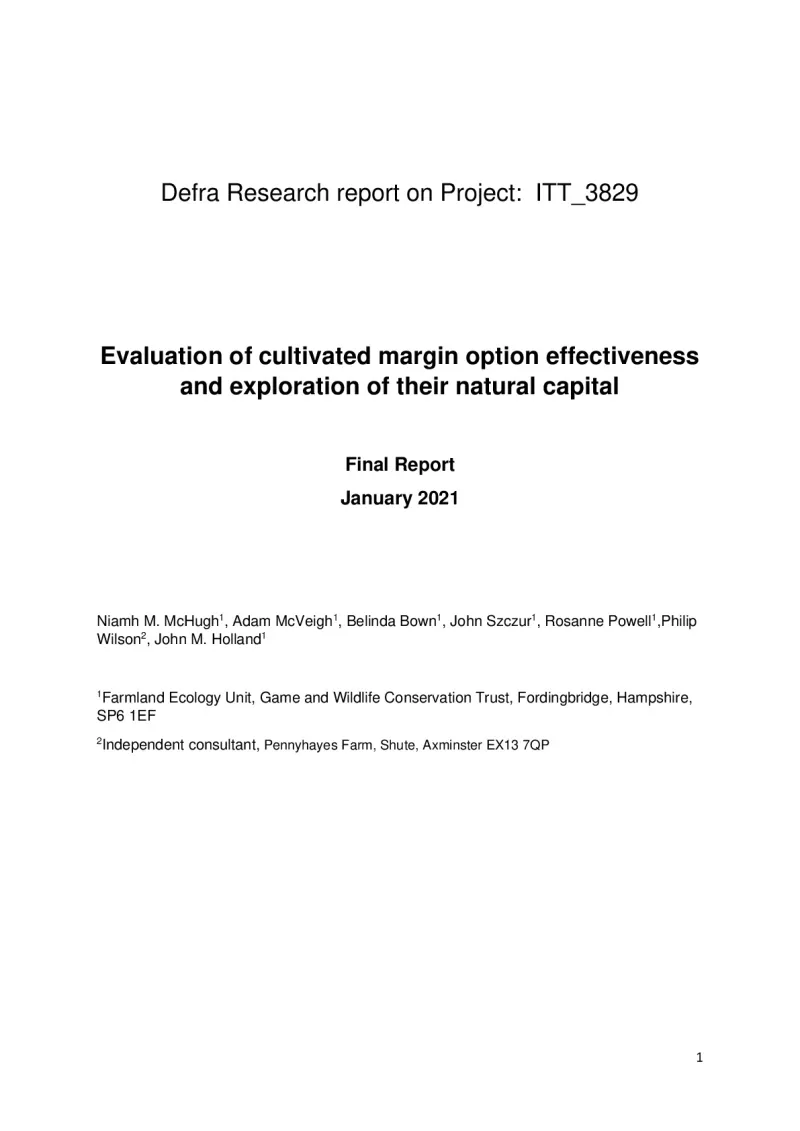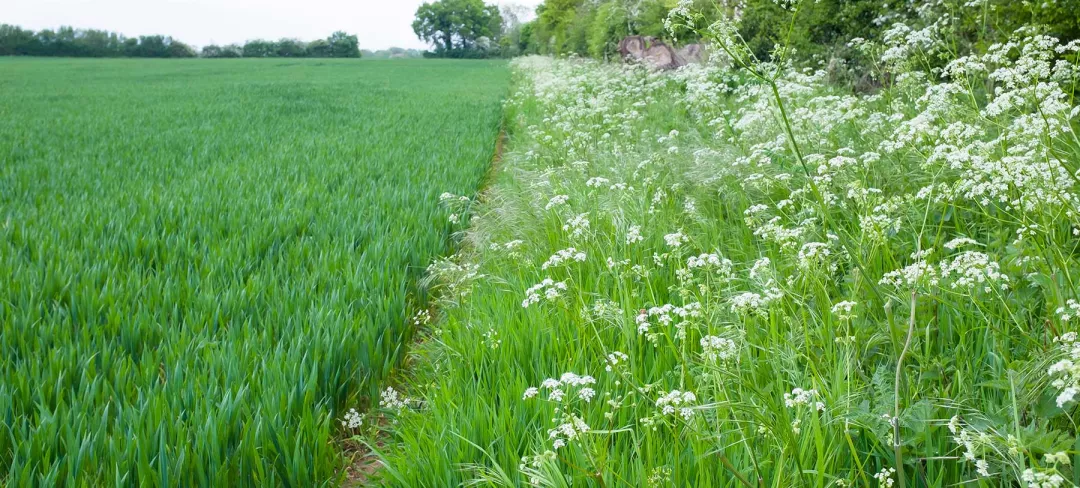Evaluation of cultivated margin option effectiveness
The evaluation aimed to identify how habitat management influences the botanic composition of cultivated margins and floristically enhanced grass margins. It also examined how management and vegetation structure influenced their use by associated invertebrate groups.
- Other
- 2014-2022
- Environmental impacts


The evaluation, which covers the period 2018-2019, was published in 2021 and commissioned by DEFRA/Natural England. The study aims to:
- Monitor the abundance and diversity of two functional groups of invertebrates (pollinators and natural enemies) on: A) cultivated fallow plots or margins for arable plants, hereafter cultivated margins (HF11/20 and AB11); and B) floristically enhanced grass margins (HE10 and AB8).
- Identify how management influences the botanical composition/structure of these habitats and use by associated invertebrate groups.
- Provide information on the relative value of cultivated margins and floristically enhanced margins to arable plants, pollinators and natural enemies.
Assessments were made across 15 farms per year for two years, providing each of the 30 farms with an example of a cultivated and floristically enhanced margin. Therefore, 30 cultivated margins and 30 floristically enhanced margins were surveyed during the study in 2018, and 15 farms were selected for surveys across three regions of England: south (Hampshire/Dorset), midlands (Northamptonshire/Rutland/Nottinghamshire/Lincolnshire) and east (Norfolk). In 2019, 15 farms were selected for surveys across three regions of England: south (Hampshire/Dorset), Oxford (Oxfordshire) and east (Norfolk). The midlands region was not surveyed in 2019 due to a lack of interest by farmers in the area.
Sites were selected randomly from a list of eligible farms supplied by Natural England and those within the study regions. Preliminary margin information was collected to determine the suitability of each margin for the project.
Management data and information on other key attributes thought to influence plant and invertebrate communities were recorded for each margin type. For both margin types, key attributes included age, width, soil type or soil fertility, cereal crop adjacent, adjacent habitat type, year and survey number, if appropriate. For floristically enhanced margins, the management data also included information on the plot establishment method and if/when the margin was cut.
Regarding limitations, the pitfall trapping technique has limitations (e.g. capture is activity-dependent) and is, therefore, more valuable for estimating species richness than abundance.
Of the 30 sites surveyed, 25 included species used to define and evaluate 'Important Arable Plant Areas' in the UK. Margins also had 183 species of broad-leaved plants and grasses present, highlighting the importance of cultivated margins for plant diversity and rare arable plants. Soil type, along with the type and time of cultivation, significantly influenced cultivated margin vegetation composition. Relationships between margin management and vegetation structure largely drove trends in invertebrate abundance. Five herbaceous plant species and two pernicious grass species were significantly more abundant when cultivations were conducted in autumn than in spring. Three of the broad-leaved species have forage value for wild bees. Margins cultivated by ploughing compared to minimum tillage had fewer grass weeds and a higher proportion of bare ground, with lower vegetation height and density. These ploughed margins had fewer pollinators, solitary bees and natural enemies. Margins cultivated by minimum tillage had more perennial plants, including dandelions favoured by wild bees and Syrphidae (hoverflies). Rotational cultivated margins were associated with fewer flower heads, lower broad-leaved species cover and lower vegetation heights, negatively impacting bee abundance. Larger cultivated margin habitats had fewer pernicious grass weeds and, although coverage of broad-leaved species was lower, they were home to less competitive plant species. This resulted in fewer Staphylinidae but more Syrphidae (hoverflies) in those margins.
The most important factor affecting the composition of perennial vegetation was age since establishment, with vegetation in recently established margins being characterised by a higher frequency of annual species typical of regularly cultivated arable land and early successional stages. The vegetation characteristics changed over time, with older margins dominated by grass and containing fewer flowerheads to support foraging pollinators. Compared to natural regeneration, sown margins were associated with increased bee and hoverfly numbers, which is probably linked to the high flowerhead abundance and broad-leaved species coverage on sown plots.
Author(s)
Farmland Ecology Unit, Game and Wildlife Conservation Trust and Independent consultant, Pennyhayes Farm